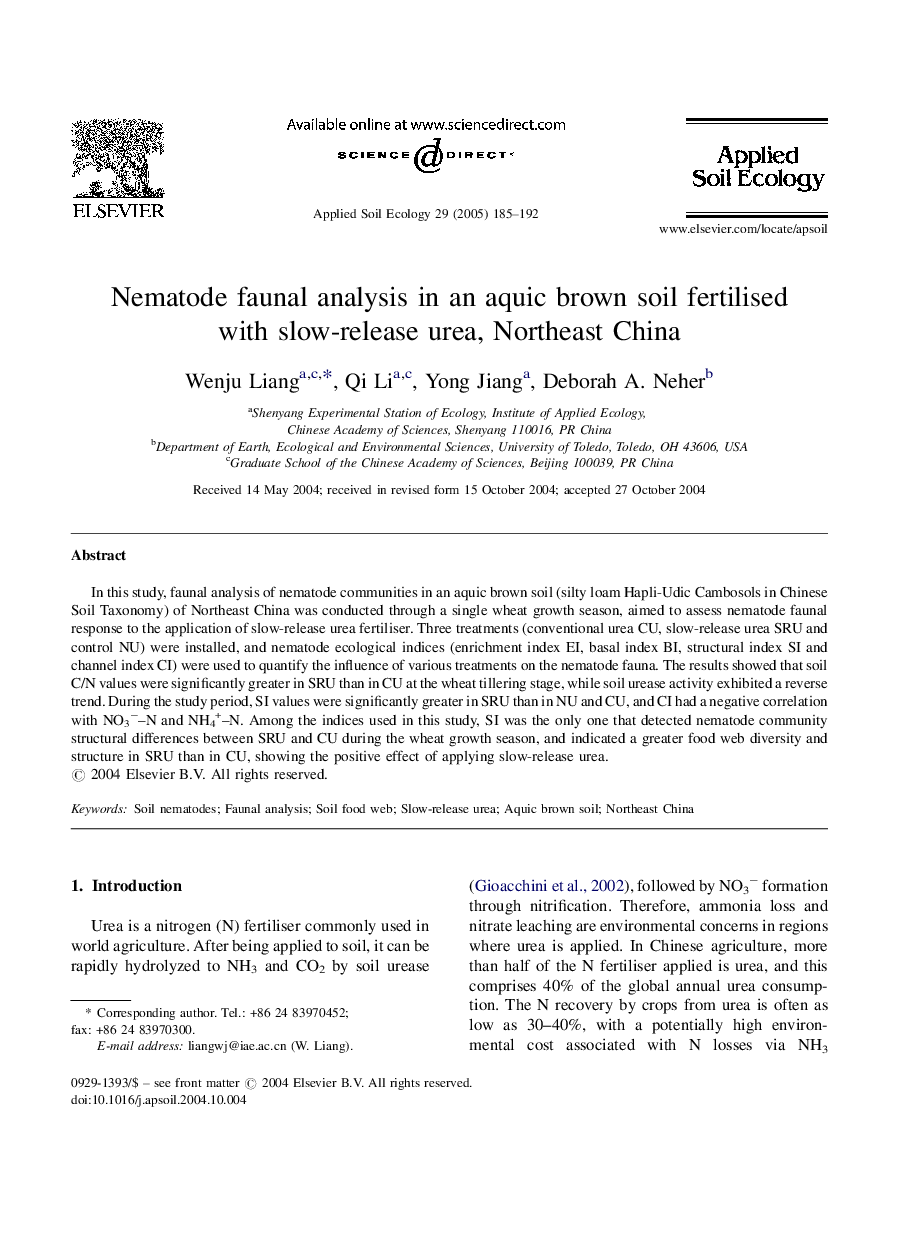| Article ID | Journal | Published Year | Pages | File Type |
|---|---|---|---|---|
| 9445219 | Applied Soil Ecology | 2005 | 8 Pages |
Abstract
In this study, faunal analysis of nematode communities in an aquic brown soil (silty loam Hapli-Udic Cambosols in Chinese Soil Taxonomy) of Northeast China was conducted through a single wheat growth season, aimed to assess nematode faunal response to the application of slow-release urea fertiliser. Three treatments (conventional urea CU, slow-release urea SRU and control NU) were installed, and nematode ecological indices (enrichment index EI, basal index BI, structural index SI and channel index CI) were used to quantify the influence of various treatments on the nematode fauna. The results showed that soil C/N values were significantly greater in SRU than in CU at the wheat tillering stage, while soil urease activity exhibited a reverse trend. During the study period, SI values were significantly greater in SRU than in NU and CU, and CI had a negative correlation with NO3â-N and NH4+-N. Among the indices used in this study, SI was the only one that detected nematode community structural differences between SRU and CU during the wheat growth season, and indicated a greater food web diversity and structure in SRU than in CU, showing the positive effect of applying slow-release urea.
Related Topics
Life Sciences
Agricultural and Biological Sciences
Ecology, Evolution, Behavior and Systematics
Authors
Wenju Liang, Qi Li, Yong Jiang, Deborah A. Neher,
